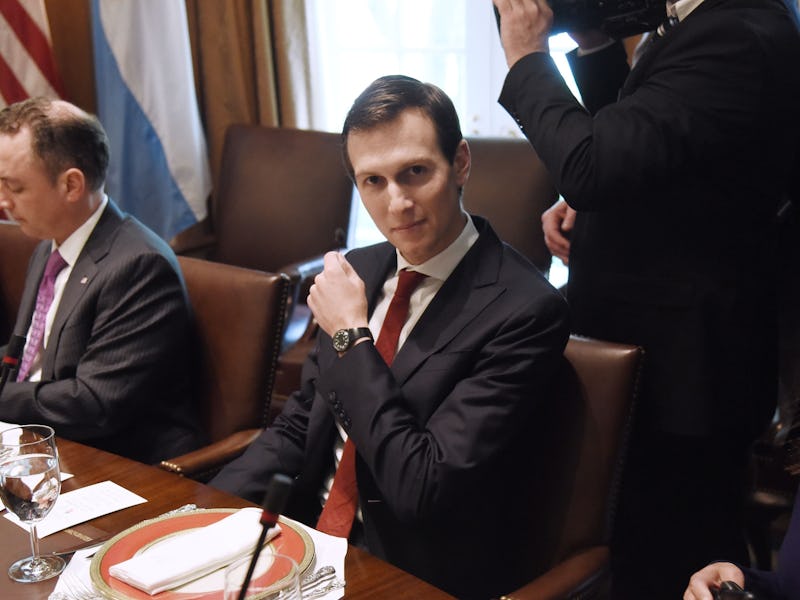Inside the White House's History of Secret "Back Channels"
Way before Jared Kushner, covert communications were common practice.

Following the news Friday that Jared Kushner allegedly discussed the possibility of setting up a secret communications channel between the White House and Russia, a press briefing at the end of the G7 summit Saturday naturally deviated to questions about President Donald Trump’s son-in-law.
Kushner’s a top adviser to Trump and is now a central figure in the FBI’s investigation into Russian active measures in the 2016 presidential election.
National Security Adviser H.R. McMaster and National Economic Council Director Gary Cohn, who both briefed reporters at the G7 summit in Sicily, Italy, on Saturday, refused to comment specifically on Kushner. But when asked if he would be concerned to learn that someone within the administration was seeking to establish back-channel communications with Russia, McMaster answered no.
“We have back-channel communications with a number of countries,” McMaster said. “So, generally speaking, about back-channel communications, what that allows you to do is to communicate in a discreet manner.”
Given the persisting questions over Russia’s involvement with Trump’s unlikely ascent to the presidency, the content of those “discreet” communications is of great interest, though.
Secretive, back-channel communications are defined as secondary or covert routes used for passing information between governments. American administrations have actually frequently used them to communicate with foreign governments — especially when official diplomatic relationships have been hostile.
A year and a half of secret, back-channel negotiations between Cuba and the United States led to an exchange of prisoners in 2014 and the official opening of diplomatic relations between the two nations. The negotiations were conducted by two of President Barack Obama’s national security advisers and a small Cuban team.
Even prior to that, Back Channel to Cuba, written by Peter Kornbluh of the National Security Archive and William LeoGrande of American University, claims that every U.S. administration has had some kind of secret diplomatic dialogue with Cuba since President Kennedy in 1963. Declassified documents have revealed secret meetings all around the world — in airport lounges, restaurants, and hotel rooms, and in locations as far flung as New York, Paris, and Guadalajara — between Cuban and American officials.
President Richard Nixon was also a big fan of back-channels for communicating with more hostile foreign governments like Russia and China in moments of crises. He even employed an informal committee to engage in these kinds of communications, known as the Washington Special Action Group.
Common practice aside, it’s unknown whether Kushner was attempting to obscure the appearance of the Trump administration’s relationship with Russia by allegedly attempting to establish a secret back-channel.
As Attorney General Jeff Sessions and former national security adviser Michael Flynn both failed to disclose meetings with Russian officials, some believe that Kushner’s actions point to a larger pattern of secrecy within the current White House when it comes to its dealings with Russia.